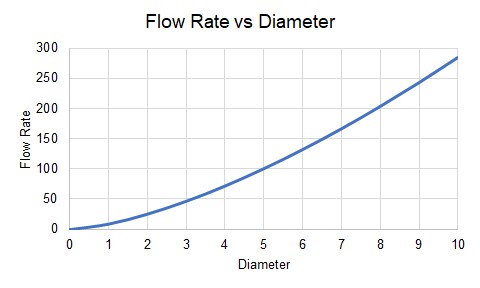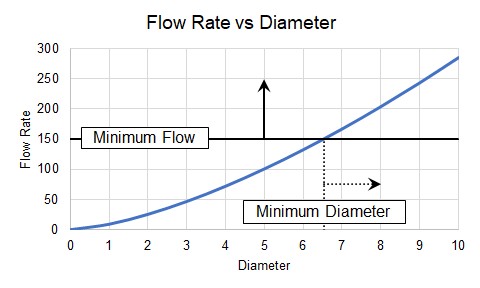Design Requirement
A real system has Design Requirements - specific parameters that must be met, regardless of the Objective value. Targeting an Objective without any other associated requirements is not meaningful. If a system is not attempting to achieve some goal, then the minimum cost is zero as no system is required.
The Objective alone may be "How can I drive my cost to a minimum?" but the question really on the designer's mind is "How can I drive my cost to a minimum while maintaining desired operation?"
Design Requirements are defined on the Design Requirement panel.
Note: There is a distinction between a boundary and a Design Requirement. Boundaries represent a physically forced flow or pressure while Design Requirements represent desired behavior. See Boundaries vs. Design Requirements for further discussion.
Conceptual Example
Continuing with our example from the Objective topic, we want to minimize the cost of some pipe. However, there is a minimum flow rate. This is a Design Requirement and limits the possible solutions. In our example, flow rate follows a predictable relationship with diameter (Figure 1).

Figure 1: Flow Rates for different diameters, showing the minimum required for our pipe
Our pipe has a Design Requirement that flow rate is at least "150", which indicates a minimum diameter between "6" and "7" (Figure 2).

Figure 2: Minimum diameter indirectly imposed by flow rate requirement
Adding Design Requirements may influence the sizing results as this requirement makes certain solutions Infeasible.



